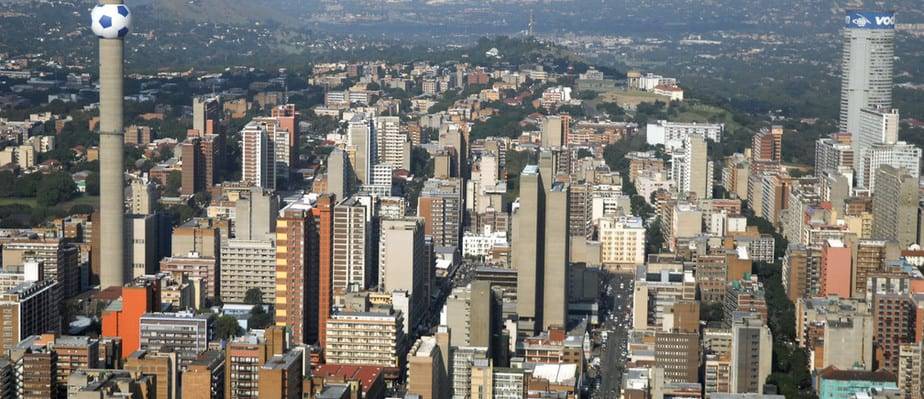In this article, we will be showing you the top richest countries in Africa. While we are at it, we will also show you the list of the poorest countries in Africa.
It is important to note that we based our list on GDP per capita instead of nominal GDP. As a result, the countries you’ll see on top might sound very weird to you.
But come to think of it, a countries wealth shouldn’t be based on how much they have, but how much the citizens earn.
So, lets dive in:
Richest and Poorest Countries in Africa According to GDP Per Capita Instead
1. Seychelles

Since gaining independence, Seychelles, the island nation in the Indian Ocean, its economy has seen an increase in GDP which currently stands at $ 1.56 billion, which may not seem impressive, but given that Seychelles are among the smallest countries in Africa, with a population of 95,235 and a GDP per capita of $ 16,332, it is one of the richest country in Africa.
Seychelles’ economy is based primarily on luxury tourism and fishing. Seychelles was economically dependent on its flourishing tourism until the crisis of the late 1990s and early 2000s when the government of Seychelles decided to develop agriculture and fisheries in order to create a diverse economy.
The government is doing a great job of being proactive so as not to become too dependent on tourism. They will always be somewhat limited in size, but the economy is very strong compared to the rest of the continent.
Rank of nominal GDP in 2020: # 51
Rank of nominal GDP per capita in 2020: # 1
Also Read: List of Oil Companies in Nigeria and their salaries
2. Libya


Libya is one of the smallest countries in Africa, with a population of just 6.47 million . Its GDP stands at $ 31.33 billion , which may not seem like much, but it ranks Libya 7th among the richest countries in Africa in terms of GDP per capita – with $ 4,853.67 .
Like many African countries, most of Libya’s economic growth comes from oil, which accounts for more than half of its GDP, and about 97% of its exports. Because of these numbers, Libya has been described as “Africa’s upper middle economy” by the World Bank.
It is difficult to envision Libya’s future at this time with so many moving parts in the country. From political instability to major security threats, the country faces specific challenges in 2020 and 2021.
Rank of nominal GDP in 2020: # 13
Rank of nominal GDP per capita in 2020: # 6
3. South Africa


South Africa has a complex and impressive social history, with a multi-ethnic society, a wide range of cultures and languages (11 official languages, to be exact). The southernmost country has 57.3 million inhabitants. It is also the 2nd richest country in Africa, with a GDP of 349.29 billion dollars and a mesmerizing GDP per capita of 6,179 dollars, which is only beaten by 5 other African countries.
However, these five countries – Botswana, Gabon, Mauritius, Mauritius, Equatorial Guinea and Seychelles – all have populations of less than 2.5 million people. Africa’s economy relies heavily on mining, agriculture, automobile manufacturing, telecommunications, and tourism. Despite all these impressive figures, South Africa still has a high rate of poverty and unemployment. South Africa is also among the top ten countries in the world for income inequality.
South Africa continues to be near the top of the class in Africa, although it has had some issues. Macroeconomic stability has returned to the country, which was an ongoing problem until a few years ago.
Rank of nominal GDP in 2020: # 2
Rank of nominal GDP per capita in 2020: # 7
4. Algeria
Algeria bases most of its economy on fossil fuels and gas. In fact, 95% of Algeria’s exports are based on its advanced fuel and gas industry. With a GDP of 173 billion dollars and a GDP per capita of 4,187 dollars, Algeria is among the five richest countries in Africa.
Due to its new possibilities, Algeria has turned in recent years towards sustainable development in order to create more jobs and alleviate the housing shortage it faces. The Algerian economy also hosts other sectors which, although they do not hold a significant percentage of the country’s economy, occupy a respectable position. These sectors include agriculture, fishing, banking and tourism.
Hydrocarbons, one of the country’s main sectors which accounted for 34.2% of its total GDP, are now in free fall, to less than 19%, bringing overall GDP growth to 2.3%. While the budget deficit and current account deficit are on the rise, they represent respectively 7.9% and 12.6% of the country’s GDP in 2019. Compared to 7.0% and 9.6% in 2018.
Rank of nominal GDP in 2020: # 4
Rank of nominal GDP per capita in 2020: # 9
5. Morocco


Morocco is the 6th richest country and the 11th country in Africa. With a GDP of 109.82 billion dollars and a population of 36.1 million , it is also one of the top countries in Africa in terms of GDP per capita, with 3,151 dollars. Morocco is one of the richest countries in Africa and is considered a relatively liberal economy with important sectors such as tourism (which the government hopes to reach 20% of its GDP by 2020), agriculture, solar and coal energy, and the export of cannabis.
Fun fact: According to a 2016 study, around 70% of cannabis consumed in Europe comes from Morocco.
According to the World Bank, in 2019, the Moroccan economy continued to operate below the potential assigned by the said Bank. The rain-fed agriculture sector contributing to volatility and a timid recovery in other sectors. The contribution of Morocco’s net exports is always negative, which means that Morocco imports more than it exports, reflecting the low competitiveness of exports and the dependence on energy imports.
Rank of nominal GDP in 2020: # 5
Rank of nominal GDP per capita in 2020: # 12
6. Tunisia
Tunisia is in the midst of a long reform process that spanned several decades, at the beginning of which the Tunisian economy developed considerably and is currently in a state of moderate growth. Tunisia has a population of approximately 11.6 million , a GDP of $ 40.2 billion and a GDP per capita of $ 3,553.
Despite improving its economic situation, Tunisia is still trying to rebuild its economy, with 15.5% of its inhabitants living below the poverty line and 14.7% unemployed. Much of the Tunisian economy is based on tourism, which is an attractive destination mainly because of its affordable prices, beaches and pleasant climate. Tunisia attracts around 7 million arrivals per year. Tunisia is one of the top 20 richest countries in Africa.
The government seems determined to resolve the unemployment problem, which is a positive sign for the country as a whole. It has put in place policies aimed at increasing foreign exchange reserves, limiting budget deficit and subsidies, etc. These small steps should help Tunisia to get out of a rather big rut in terms of unemployment.
Rank of nominal GDP in 2020: # 15
Rank of nominal GDP per capita in 2020: # 13
7. Angola


With a total GDP of $ 124.209 billion and a GDP per capita of $ 4,407, Angola ranks fifth among the richest countries in Africa. Angola relies heavily on its natural reserves of oil and gas, as well as hydropower, diamonds and agriculture. Angola is among the top 20 richest countries in Africa.
Angola has a population of 30.7 million, most of whom are still heavily influenced by European culture due to over 400 Portuguese colonialism in the country. The official language of Angola is still Portuguese.
President João Manuel Gonçalves Lourenço has invested heavily in diversifying the economy to focus less on dependence on oil, and these efforts are slowly paying off. Angola continues its upward trend in several sectors where it had little presence previously.
Rank of nominal GDP in 2020: # 7
Rank of nominal GDP per capita in 2020: # 14
Related: How to Pack an Essentials Bag For Your Relocation?
8. Egypt
Egypt has a long and famous history, which dates back to the 6th century BCE. It is obviously well known for its iconic monuments such as the Great Pyramids, the Great Sphinx and the ruins of Memphis and Thebe. Today, Egypt is Africa’s 3rd largest economy, with a GDP of $ 237.03 billion and a GDP per capita of $ 2,500 .
It is also the 3rd largest country in Africa, with a population of 99.3 million . The Egyptian economy relies heavily on tourism, trade and shipping through the Suez Canal, natural gas, agriculture and of course oil. With a production of over 700,000 barrels of oil per year, Egypt has the largest oil refining capacity on the entire African continent.
As long as there is a need for oil, the prospects for Egypt are strong as the continent’s economic powerhouse. The availability of hard currency has helped Egypt improve its general business environment in recent times.
Rank of nominal GDP in 2020: # 3
Rank of nominal GDP per capita in 2020: # 15
9. Ghana
Ghana’s total GDP stands at $ 47.03 billion. The country has a rich and large economy, placing it 11th among African countries with the highest GDP, just behind Tanzania.
The position of their GDP has improved thanks to a large number of management plans that they have implemented to improve the position of the country. As he is blessed with the natural resources on which the country relies as a source of income. With a population of 29.46 million, its GDP per capita is $ 1,663.
Ghana’s economy continued to grow in 2019, with real GDP growth estimated at 7.1%. The strong growth momentum since 2017 has consistently placed Ghana among the ten fastest growing African economies and also one of the richest countries in Africa.
Rank of nominal GDP in 2020: # 9
Rank of nominal GDP per capita in 2020: # 17
10. Nigeria
Nigeria is the richest and largest country in Africa. With a population of 195.8, a GDP of $ 376.28 billion and a GDP per capita of $ 1,994, this West African country closes our list of richest countries in Africa. The Nigerian economy is defined as an emerging mixed economy market and, according to the World Bank, has achieved lower middle-income status. The Nigerian economy is largely based on trade and energy.


It is the United States’ largest trader in Africa, supplying the United States with about 1/5 of its total oil production. This places Nigeria 12th largest oil producer in the world and 8th largest oil exporter. In addition, Nigerian agriculture is a major source of employment for the country, as nearly 30% of its population is employed in agriculture.
2019 saw incredible growth, mainly in the transport, petroleum, and information and communication technology sectors. GDP growth reached 2.3%, compared to 1.9% in 2018. In addition, household consumption was the main driver of growth in 2019.
Rank of nominal GDP in 2020: # 1
Rank of nominal GDP per capita in 2020: # 18
11. Kenya
Kenya, a country in East Africa, has a population of 50.95 million. It produces a GDP of $ 79.51 million, making it the 9th richest country in Africa in terms of GDP. Its per capita GDP is $ 1,701, making it a “middle-income” country according to the World Bank.
Kenya is at the head of a market economy, with several public infrastructures, while maintaining a liberalized trading system and taking advantage of its ports to the Indian Ocean. Sectors like fishing, mining and tourism contribute to the growth of the country. However, it is agriculture that plays a major role in Kenya’s economy and workforce, as around 75% of its workforce makes a living from it. The coffee and tea industry is the largest in Kenya’s agricultural economy.
Once again, household consumption and investment are the key factors for growth in Kenya. The GDP grew by 5.9% in 2019, while the Kenyan economy is stable, compared to 6.5% in 2018. With inflation remaining within the limits of the central targets, the decline in growth between 2018 and 2019 is mainly due to adverse weather conditions.
Rank of nominal GDP in 2020: # 6
Rank of nominal GDP per capita in 2020: # 21
12. Ivory Coast


Côte d’Ivoire enjoys a stable economy, a population of 24.9 million , a GDP of 53 billion dollars and a considerable GDP growth of 8.5% per year , which is currently the fourth fastest growing GDP in the world. The vast majority of the inhabitants of Côte d’Ivoire (around 70%) are engaged in agriculture.
The main crops in Ivorian agriculture are coffee and cocoa beans, which account for around 40% of world production. As a result, the economy of Côte d’Ivoire is strongly influenced by fluctuations in the prices of cocoa and coffee. This led the Ivorian government to press for greater diversification of the country’s economy. These attempts failed and most of the industry is still based on agriculture.
Pro-market and pro-business reforms in the country continue to drive the country forward in 2019 and 2020. Analysts expect them to remain strong with annual growth.
Rank of nominal GDP in 2020: # 12
Rank of nominal GDP per capita in 2020: # 22
13. Republic of Cameroon


With a GDP per capita of $ 1,443, the Republic of Cameroon is one of the twenty richest countries in Africa according to this criterion. The country’s total GDP is $ 34.79 billion.
With large agricultural structures and a population of 23.44 million , the county still has a lot of people involved in the agricultural sector, but the economy has grown over the year. Timber reserves add value to the country’s economy as they represent about 37% of the total land mass.
Rank of nominal GDP in 2020: # 13
Rank of nominal GDP per capita in 2020: # 23
14. Senegal
Senegal is limited in natural resources and its economy is therefore essentially based on agriculture, tourism and foreign trade in agricultural products and fish. Senegal has a population of 16.2 million, a GDP of $ 16.1 billion and a GDP per capita of $ 1,019. Tourism in Senegal is an essential component of its economy.
Senegal’s historic sites, national parks and nature reserves are an important source of Senegal attraction for tourists from all over the world.
As long as the rest of the economy can remain strong, Senegal has good prospects for the future. Public investments in infrastructure, agriculture and energy keep the budget deficit at 3.6% of GDP in 2018 and 2019, and should continue to do so in 2020.
Rank of nominal GDP in 2020: # 18
Rank of nominal GDP per capita in 2020: # 24
15. Zimbabwe


In the past, Zimbabwe was known in Africa for its extensive crops of wheat and cotton, but since the early 2000s Zimbabwe’s economy has shrunk considerably. Zimbabwe has a population of 16.9 million, a GDP of $ 17.1 billion and a GDP per capita of $ 1,149.
Zimbabwe’s local currency, the Zimbabwean dollar, has reached a state of hyperinflation over the past decade, to such an extent that Z100 billion is equivalent to one US dollar. After many attempts to restore the currency, it was decided in 2009 to abandon it. Since then Zimbabwe has used foreign currencies such as the US dollar and its economy has started a process of reform.
The government continues to develop a reform plan, but there is no guarantee that it will work. It could be years before the country experiences a noticeable improvement in the future.
Rank of nominal GDP in 2020: # 20
Rank of nominal GDP per capita in 2020: # 25
Also Read: Best Real Estate Companies In Australia.
16. Zambia


Due to its rapid rate of urbanization, Zambia’s economic growth is one of the fastest in Africa. Despite this significant growth, Zambia is still considered a poor country in recent decades, with a population of 17.6 million , a GDP of 23.1 billion and a GDP per capita of $ 1,342 .
About 60.5% of Zambians live below the poverty line. Agriculture is one of the most important industries in Zambia as it provides more jobs than the mining industry. The main crops in Zambia are cereals, but other crops include cotton, sugar, and soybeans.
The country is still feeling the effects of the suspension of donor aid, which took place in 2018. It happened after millions were diverted from social assistance grants. The emphasis is now on greater involvement of the private sector in infrastructure aid.
Rank of nominal GDP in 2020: # 19
Rank of nominal GDP per capita in 2020: # 27
17. Tanzania


Next comes Tanzania, arguably one of the most beautiful places in Africa. With a relatively high total GDP of $ 51.72 billion , it is the tenth economically rich country in Africa, by this measure.
Tanzania has a population of 59.09 million , which is the 4th largest population in Africa. The Tanzanian population relies heavily on agriculture as a source of income. The country has grown in terms of GDP, but there are still people below the poverty line.
A clearly diversified economy helps Tanzania to maintain steady growth, 6.8% in 20018, or only 7% growth in 2018. This diversification is characterized by robust private consumption, substantial public spending, strong investment growth. and a recovery in exports, which are the basis of this positive outlook. Other sectors such as tourism, mining, services, construction, agriculture and manufacturing also contribute.
Rank of nominal GDP in 2020: # 10
Rank of nominal GDP per capita in 2020: # 30
18. Ethiopia
Ethiopia is the second most populous country in Africa, with 107.53 million inhabitants. And the 7th richest country in Africa with a GDP of $ 80.87 billion.
The country does not produce oil, but it is the fastest growing economy, which relies on agriculture, the export of coffee, livestock, gold and leather products, as well as on the 14 main rivers of the county (including the famous Nile) to produce energy.
The increase in private sector participation is huge for Ethiopia, which continues to progress. The goal is to eventually become a production center instead of depending so much on agriculture.
Rank of nominal GDP in 2020: # 8
Rank of nominal GDP per capita in 2020: # 32
19. Uganda
Uganda is one of the poorest countries in the world. The country’s total GDP stands at $ 25.53 billion and the GDP per capita is $ 615.31 with a population of 44.27 million people. This places Uganda among the largest countries in Africa in terms of population, but also among the poorest. However, the country has witnessed a recent shift in the economy, to measures taken by the government to protect the country’s natural resources.
Also Read: What Is The Best Time to Visit Uganda?
In 1992, 56% of the country’s population lived below the poverty line of $ 1.25 per day. In recent years, this figure has been reduced to around 25%. Government officials continue to hope that over the next few years they will achieve their goal of reducing the number of poor people in the population to 10%.
There was a big push in the 1980s to liberalize the Ugandan economy, but it has faded over the years. They continue to look for answers that will lift large numbers of people out of poverty. As in 2019, the Ugandan economy experienced strong growth, estimated at 6.3%. This growth is largely due to the expansion of the service and industrial sectors (mainly construction and mining).
Rank of nominal GDP in 2020: # 16
Rank of nominal GDP per capita in 2020: # 39
Related: 13 best Nigerian restaurants in Dubai You Should Checkout
20. South sudan


South Sudan is one of the poorest countries in Africa and its economy is weak and underdeveloped. South Sudan has a population of 12.9 million, of which only 24% are literate.
Its GDP is $ 3.61 billion and its GDP per capita is $ 275. Conditions in South Sudan are known to be the most problematic, in most villages and populated areas there is no electricity and access to clean water is not possible.
Over the past year, the country has continued to try to overcome poor infrastructure to become a financially leading country in Africa. The construction of the deep water port of Kribi is the first ever to be carried out in Central Africa, and it is expected to significantly increase hydropower production.
Rank of nominal GDP in 2020: # 17
Rank of nominal GDP per capita in 2020: # 42
21. Sudan


Sudan is the 10th most populous country in Africa, with a population of 41.51 million . It is also the 9th richest country in Africa, with a GDP of $ 58.23 billion and a GDP per capita of $ 1,428.
In 2012, Sudan was the 17th fastest growing economy in the world. Largely because it is rich in oil and gas. The country has managed to increase its GDP and its dependence on agriculture as a second source of income. Sudan is also the world’s largest exporter of cotton and peanuts.
The economic uncertainty of recent times makes people still a little uncertain about the long-term growth of Sudan. Currency shortages have only added to people’s mixed feelings about the economy, but the economy continues to tread upward.
Rank of nominal GDP in 2020: # 17
Rank of nominal GDP per capita in 2020: # 42
22. Democratic Republic of Congo


The Democratic Republic of the Congo has a mix of economic sectors such as mining, fishing, forestry, agriculture, copper and cobalt. Although the country’s total GDP, which stands at $ 41.44 billion, may appear high compared to other African countries.
But it’s an extremely large population of 84 million , bringing its GDP per capita to the insanely low level of $ 478.23. This places the country among the ten poorest countries in Africa, according to this measurement. Nevertheless, this country is a perfect example of a mixed economy.
According to the African Development Bank group, growth fell from 5.8% in 2018 to 4.3% in 2019, due to a slowdown in extractive industries, the main engine of the economy despite a drop in prices. certain raw materials (copper and cobalt). Agriculture suffered from low productivity while energy shortages hampered industrialization efforts. Growth was driven by domestic demand, especially private investment and public consumption, which further contributed to the country’s socio-economic gaps.
Rank of nominal GDP in 2020: # 11
Rank of nominal GDP per capita in 2020: # 46
23. Niger


Niger is one of the poorest countries in Africa, with a population of 22.3 million , a GDP of $ 7.89 billion and a GDP per capita of $ 444, which is actually the one of the lowest in the world. The Nigerien economy is based on agriculture (mainly subsistence farming), which provides jobs for most of its inhabitants, and on its large uranium deposits, which is in fact one of the largest deposits in Niger. uranium to the world.
Despite these efforts, the Nigerien economy is struggling to maintain itself as it is affected by cycles of drought, rapid population growth and falling uranium prices over the years.
Until entrepreneurial dynamism improves, the landlocked country will struggle to see real improvements. Mineral exports offer some potential for growth, but the country has yet to figure out how to take full advantage of it.
Rank of nominal GDP in 2020: # 35
Rank of nominal GDP per capita in 2020: # 48
24. Madagascar
Despite Madagascar’s growing potential and interest as a thriving tourist destination, mainly due to its forests and unique habitats, and despite its government’s efforts to develop its tourism industry, tourism in Madagascar remains underdeveloped. , with few visitors each year compared to its neighboring countries.
Apart from tourism, Madagascar bases most of its economy on agriculture and the textile and mining industries. Madagascar has 26.2 million inhabitants, its GDP stands at 10.3 billion dollars and its GDP per capita at 405 dollars .
Officials continue to work on developing a capital market that remains stable. Government corruption has always hurt the business environment in the country, so until this is resolved Madagascar will continue to struggle.
Rank of nominal GDP in 2020: # 28
Rank of nominal GDP per capita in 2020: # 49
25. Malawi
Malawi’s economy is mainly based on agriculture, with 90% of its 19.16 million people living in rural areas of the country. This landlocked country is located in the heart of southern central Africa and is considered by the United Nations to be an LDC – (a least developed country).
Malawi’s total nominal GDP is set at $ 6.20 million and its per capita GDP is a surprisingly low $ 323, with its agricultural sector dominated by tobacco manufacturing and exporting. Exports of tobacco, tea, sugarcane and coffee, together with exports of tea, sugarcane and coffee, account for about 90% of Malawi’s total export earnings. Malawi also relies on tourism as a source of income, which has seen notable growth over the past decade.
Malawi continues to struggle to connect with the rest of the region, but it continues to move forward in new and creative ways. GDP grew by 5% in 2019, compared to 4% in 2018. In addition, annual inflation was estimated at 9.0% in 2019, which is a significant improvement from 21.7% in 2017.
Rank of nominal GDP in 2020: # 38
Rank of nominal GDP per capita in 2020: # 51
















Kenya not there plz sisi ni maaslah plz